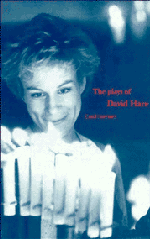Book contents
- Frontmatter
- Contents
- Acknowledgements
- Introduction: a statement of departure
- 1 The sixties revolution
- 2 Stepping into the past
- 3 A turning over
- 4 The people's war and peace
- 5 Sense of an ending
- 6 The foundry of lies
- 7 Dreams of leaving
- 8 Drawing a map of the world
- 9 All our escapes
- 10 Painting pictures
- 11 The moment of unification
- 12 Strapless
- 13 Heading home?
- 14 Stepping into the future
- Conclusion: a statement of arrival
- Notes
- Select bibliography
- Index
8 - Drawing a map of the world
Published online by Cambridge University Press: 10 May 2010
- Frontmatter
- Contents
- Acknowledgements
- Introduction: a statement of departure
- 1 The sixties revolution
- 2 Stepping into the past
- 3 A turning over
- 4 The people's war and peace
- 5 Sense of an ending
- 6 The foundry of lies
- 7 Dreams of leaving
- 8 Drawing a map of the world
- 9 All our escapes
- 10 Painting pictures
- 11 The moment of unification
- 12 Strapless
- 13 Heading home?
- 14 Stepping into the future
- Conclusion: a statement of arrival
- Notes
- Select bibliography
- Index
Summary
Lines of engagement
From the very beginning, A Map of the World has an argumentative tone. Two journalists meet casually in a hotel lobby and immediately become sparring partners. Stephen Andrews has a tendency to read situations wholly in terms of the jargon of political/economic analysis, to be impatient and intolerant where Elaine le Fanu, an experienced reporter for CBS, accepts and observes the process of politics. Hers is from the beginning the voice of the old hand, the voice of informed mediation between the west and the Far East, an influence for objectivity on the sidelines of a frustrating UNESCO conference on poverty.
This is established before the Indian-born novelist Victor Mehta, who is to address the assembly, swans in with an elusive waiter in tow, comfortable and in control. Talking of truth as his right, his is the carefully cultivated and precise language which belongs only to the foreigner writing in English. As Darwin said in Plenty, ‘seen from Djakarta this continent looks so old, so beautiful’ (Plenty, p. 27) and Mehta values all old civilisations over young ones. Stephen is visually boyish, proceeding by parody in a language buzzing with contemporary slang. He is thus aligned with the younger civilisations, whose aid he defends and on whose behalf he attacks the content of Mehta's books.
- Type
- Chapter
- Information
- The Plays of David Hare , pp. 115 - 126Publisher: Cambridge University PressPrint publication year: 1995



